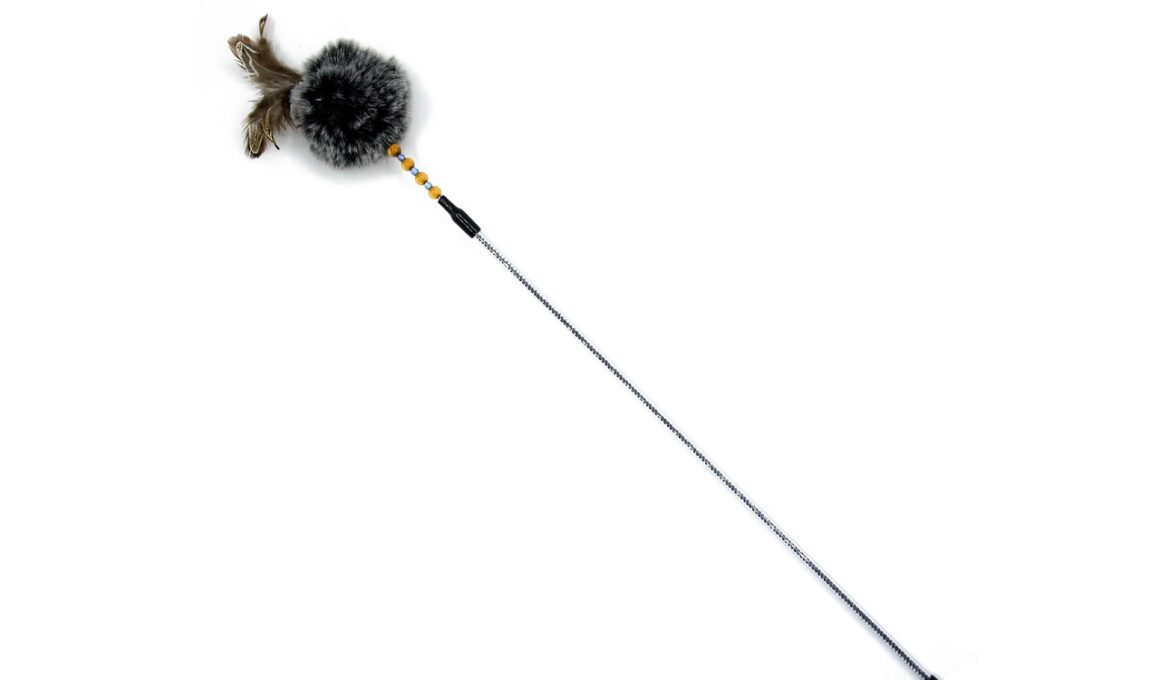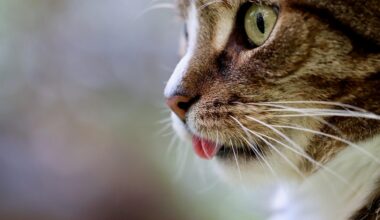Sustainable Practices in Cat Toy Manufacturing: Eco-Friendly Approaches
In recent years, the demand for sustainable cat toys has increased significantly among pet owners. As awareness of environmental issues grows, manufacturers are compelled to adopt eco-friendly practices. These changes stem from a desire to make cat toy production not only safer for pets but also less harmful to our planet. Traditional materials like plastic are often non-biodegradable and contribute to pollution. Consequently, manufacturers are now exploring natural alternatives such as organic cotton, bamboo, and recycled materials. By producing toys from these sustainable resources, we can ensure that they are safer for both our furry friends and the environment. For example, organic cotton is grown without harmful chemicals, making it a safer choice for cat toys. Additionally, bamboo is a fast-growing plant that can be harvested sustainably. Such materials not only reduce the carbon footprint involved in their production but contribute to a healthier planet overall. As businesses make the transition to these eco-options, they attract a responsible consumer base that values sustainability, pushing the entire industry toward greener practices.
One of the primary methods of achieving sustainability in cat toy manufacturing is through improved production methods. Innovations in production techniques can significantly reduce waste and energy consumption. For instance, many manufacturers are adopting lean manufacturing principles, which focus on minimizing waste while maximizing productivity. Processes such as 3D printing allow for the efficient creation of toys with less material waste. By designing toys digitally first, manufacturers can optimize the shapes and materials used, ensuring that each piece serves its purpose efficiently. Moreover, the use of renewable energy sources in manufacturing facilities is gaining traction. Solar and wind power are becoming more common as companies realize their potential cost savings in the long run. This shift not only lowers operational costs but also showcases a commitment to sustainability. Additionally, implementing a robust recycling program within manufacturing environments helps divert waste from landfills. Companies that take proactive steps in these areas can produce high-quality cat toys that are informed by eco-friendly intentions, paving the way for a future where sustainability is prioritized.
Material Selection for Eco-Friendly Toys
Choosing the right materials is crucial when designing sustainable cat toys. Manufacturers are beginning to prioritize renewable, recyclable, and biodegradable materials that do not pose environmental threats. Wool and jute, for example, are both renewable resources that have gained popularity in toy manufacturing. Wool is a natural antibacterial material that can repel dirt, making it an ideal choice for pet toys. Jute, on the other hand, is another biodegradable option that can be utilized creatively to create textures that cats enjoy. Recycled plastics are also making their way into the cat toy industry. Manufacturing plush toys or chewables from recycled PET bottles reduces the need for new materials, ultimately lessening energy consumption and emissions associated with production. Additionally, natural dyes and inks are being used to ensure that colors on toys do not contain harmful chemicals. As consumers increasingly demand transparency in the sourcing of materials, manufacturers who adopt these eco-friendly choices tap into a growing market dedicated to sustainable products.
Incorporating sustainable packaging practices is another significant aspect of eco-friendly cat toy manufacturing. Packaging not only protects products during transit but also affects the waste generated post-purchase. Many companies are now exploring biodegradable or recyclable packaging options to minimize their ecological footprint. Using materials such as recycled cardboard or soy-based inks can enhance the sustainability of the packaging while ensuring it remains functional and aesthetically pleasing. Some brands are even moving towards packaging reduction strategies, where toys are shipped without excessive outer packaging. This approach not only reduces waste but also lowers shipping costs, allowing manufacturers to pass savings onto customers. Furthermore, educating consumers about responsible disposal of packaging materials helps create a culture of environmental consciousness. As more companies adopt these sustainable packaging practices, they contribute positively to the growing movement towards eco-friendliness in the pet industry and beyond. By aligning packaging with the sustainable ethos of the brand, companies can present a cohesive message to environmentally-conscious shoppers.
Innovative Designs in Eco-Friendly Cat Toys
Eco-friendly practices also extend into the design phase of cat toy manufacturing. Innovative designs not only cater to the natural instincts of cats but also utilize sustainable approaches. Toys that engage cats mentally and physically can reduce destructive behaviors, enhancing their quality of life. Companies are incorporating elements like interactive play features and multi-functionality into their products. For instance, toys that serve as both playthings and scratching posts can increase the longevity of the product. Furthermore, modular designs that allow for repair or component replacement extend the lifecycle of the toys, significantly reducing waste. Manufacturers can also explore upcycling methods, repurposing materials and integrating them into new toy designs. This creativity can not only lead to unique product offerings but establishes a brand as a leader in sustainability. Engaging storytelling around eco-friendly designs can captivate consumers, fostering loyalty and aligning their values with the products they purchase. In embracing these innovative designs, the cat toy industry can significantly impact the promotion of sustainable practices while appealing to conscious consumers.
Collaboration within the supply chain enhances the sustainability of cat toy manufacturing. Partnerships between manufacturers, suppliers, and retailers foster a commitment to eco-friendly practices. For instance, sourcing sustainable materials requires a close relationship with suppliers who share the same values. Companies can work together to develop more sustainable material options, ensuring that their entire supply chain is focused on sustainability. Additionally, implementing strict sustainability criteria for suppliers can help brands maintain consistency in their sustainable practices. Retailers can also play a crucial role by promoting eco-friendly products to consumers. By offering educational resources and highlighting the benefits of sustainable toys, retailers can drive consumer demand towards more environmentally-friendly choices. It creates a ripple effect that strengthens the entire industry and builds a community around sustainability. Collaboration also enables the sharing of resources, research, and innovations aimed at improving sustainability practices. Together, these organizations can work towards a common goal of promoting responsible cat ownership and environmental stewardship.
The Future of Sustainable Cat Toy Manufacturing
Looking ahead, the future of sustainable cat toy manufacturing appears promising. As more consumers demand eco-friendly options, the industry is poised for growth in sustainable practices. Emerging technologies such as bioplastics and smart materials are likely to transform manufacturing processes, leading to further reductions in environmental impact. Companies that invest in research and development of these new materials will stand out and gain competitive advantages in a growing market. Education plays a vital role as well; as manufacturers share information about their sustainable practices, they can inspire consumers to make informed choices. Furthermore, regulatory bodies are likely to increase scrutiny on environmental impacts, pushing manufacturers to adopt greener practices or face consequences. In a world where sustainability is becoming non-negotiable, the cat toy industry must adapt and innovate continually. The key will be maintaining a consumer-focused approach, ensuring that eco-friendly practices align with creating enjoyable and safe experiences for cats. By doing so, manufacturers can lead the charge towards a sustainable future that prioritizes the well-being of pets and the planet.
In summary, the journey towards sustainable practices in cat toy manufacturing involves a multifaceted approach. From material selection and production processes to innovative designs and collaborative efforts, the industry is progressing towards a greener future. As consumers become more knowledgeable and passionate about sustainability, manufacturers are compelled to follow suit. Education and transparency are essential in building trust between brands and customers. By communicating their eco-friendly efforts clearly, companies will not only strengthen their brand image but create loyal customers. As the cat toy market evolves, organizations must embrace sustainable practices to remain relevant and responsible within the marketplace. The commitment to creating products that are safe for pets and the environment can set a brand apart, reflecting its values in the eyes of socially-conscious consumers. Additionally, monitoring and adjusting strategies will ensure that companies remain leaders in sustainability. Ultimately, it is a collective effort by manufacturers, retailers, and consumers to create a sustainable future for cat toys. By working together and championing green initiatives, the industry can contribute meaningfully to the overall reduction of its environmental footprint.


